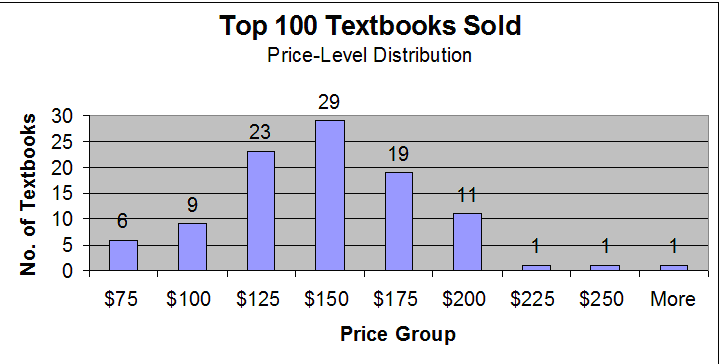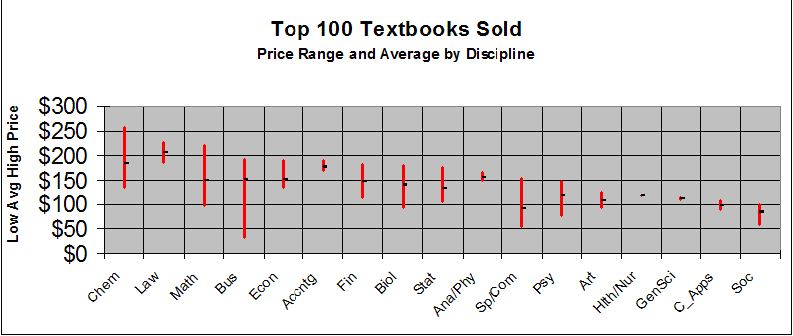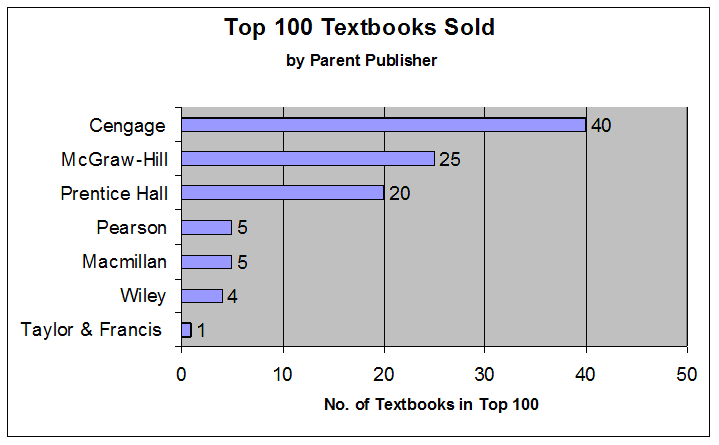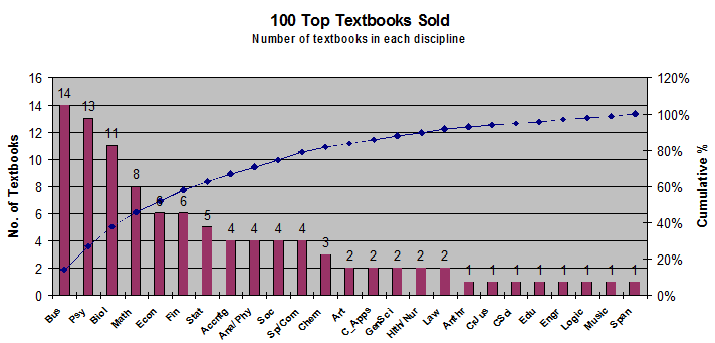In attempting to answer the questions, “Are textbooks really too expensive?” and “What should they cost”, we analyzed Amazon.com’s top 100 textbooks sold in the spring of 2010, and discovered some interesting patterns along the way. Here are our preliminary observations: (More charts and graphs available for download at the end of this post.)
- The #1 selling textbook is in Biology, #50 is a Calculus book, and #100 is in Psychology.
- When looking at the number of textbooks in the top 100 by discipline the rankings are:
- Business(#1)
- Psychology (#2)
- Biology (#3)
- Interestingly enough, those three subjects add up to 39% of the top 100. Add in math and you have 47% of the textbooks in four subjects.
- Half of the 14 Business textbooks are in Marketing.

- The top 100 textbooks cost an average of $135, ranging from $65 to $256, σ ~$34. The median is $133.
- The most expensive textbook is in Chemistry ($256), the least expensive Industrial Organization ($35). However, based on average cost per discipline the most expensive textbooks are:
- Law ($205)
- Engineering ($195)
- Chemistry ($182)
- Accounting ($177)
- The range of prices by subject varies considerably. The average range of all the disciplines is $41. Nine disciplines have average ranges that are 50% higher than the lowest priced book. These are ($min – $max price):

- Chemistry ($134 – $256)
- Math ($97 – $221)
- Finance ($115 – $180)
- Business ($35 – $193)
- Biology ($96 – $178)
- Statistics ($105 – $177)
- Psychology ($79 – $146)
- Speech/Communication ($53 – $154)
- Sociology ($59 – $101)
- The price per page ranges from $0.09 to $0.29, averaging $.18.
- Each textbook, on average, is 789 pages, weighs 4 pounds, and occupies 109 cubic inches of space. (Cube root ~4.781 inches.)
- There are 13 listed publishers of the 100 textbooks. When combined into their parent company, there are only five publishers, and the top three account for 85% of the top 100 textbook sales. Are there implications for the Justice Department’s Antitrust Division?

The full report contain introductory remarks, 12 graphs preliminary conclusions, and references: Anatomy of a Textbook Part I (pdf).

